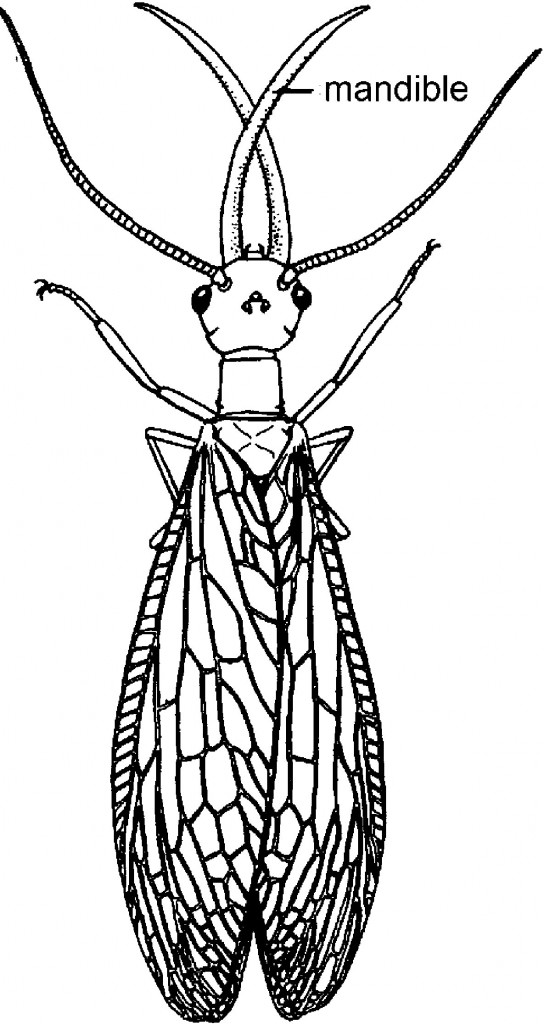Alderflies and Dobsonflies
The order Megaloptera comprises about 190 species in 60 genera in two families. All the larvae are aquatic. The larvae, especially of Corydalinae, are among the most primitive of the Holometabola. The metamorphosis from larva to adult is relatively simple.
The family Sialidae, commonly called alderflies, is a small group of about 70 species in about eight genera. They are worldwide. Most of the adults have a similar appearance and are usually dark brown to black in coloration. They lack ocelli and have the fourth tarsomere bilobed. They are an ancient group known from the Permian, about 200 million years ago, and evidently have not evolved much since then. In fact, the wing venation has many features in common with the Protoperlaria, a fossil order considered by some as ancestral to the Plecoptera. The adult life span is probably short since the reduced mouthparts do not seem adapted for extensive feeding. The eggs are laid in rows, forming large masses situated on branches, bridges, and other objects overhanging the water. The larvae hatch and fall into the water where they are predacious on other aquatic insects, especially caddisflies. There are as many as 10 larval instars which may last up to two or more years until pupation. The larva crawls out of the water and digs into the bank to form an earthen cell several feet from the edge of the water. The genera are restricted geographically. The genus Sialis Latreille is Holarctic, Protosialis Van der Weele is South American, Austrosialis Tillyard and Stenostialis are Australian, Haplosialis Navas is from Madagascar, Leptosialis is African, Indosialis Lestage is Oriental and Nipponsialis Kuwayama is Japanese. The larva has seven lateral processes and the abdomen terminates in an elongate process. The only world compilation is by Van der Weele (1910) but is greatly out of date.
The family Corydalidae, or dobsonflies, is characterized by having three ocelli and the anal region of the hindwing is very wide, folded fanlike at rest. The fourth tarsomere is not modified. There are several hundred species in about 20 genera and two subfamilies.
The Corydalinae with about 60 species, is distributed in the New World (three genera), South Africa (one genus) and Asia (f ive genera). This subfamily does not have pectinate antennae and the head is usually quadrate, oſten with a postocular spine. Oſten there are more than four crossveins between the radius and radial sector. The male terminalia are distinctive with a well developed ninth gonostylus. Many of the species are very large. Corydalis Latreille is the largest genus in the New World with about 30 species. The males of this genus oſten have the mandibles greatly extended which is similar to Acanthacorydalis Van der Weele from Asia. Platyneuromus christil (Navás) from Central America, has a tremendously expanded postocular flange. The larva has eight lateral processes and the abdomen ends in a pair of claw-like structures. In America, the larvae are called hellgrammites and are used for fishing. In one case, a larva was found inside a fish stomach many hours aſter ingestion. Glorioso (1982) has provided a good reference.
The Chauliodini was reviewed by Kimmins (1954) who recognized 12 genera. The genera are restricted in distribution similar to the Corydalinae and are found in the Cape region of South Africa (two genera), North America (four genera), Chile (three genera), Australia (one genus), Madagascar (one genus), and Asia (four genera). Males and rarely females have pectinate antennae in some genera.

Adult dobsonfly (Corydalidae)

Alary Muscles


